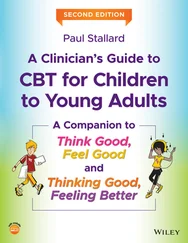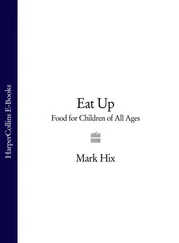Prior to discharge the level of each of Krishna’s medications are assessed by a pharmacist and a top up supply given on discharge preventing medication expiring whilst being in hospital and being wasted. This system is effective when CYP are on long‐term medications.
Tablets should be considered as more accurate than liquid medicines and therefore safer, they are cheaper and easier to obtain from pharmacies and more convenient to transport and administer. Non‐enteric‐coated tablets maybe broken into smaller pieces if scored or crushed, they can be given on a spoon, or placed on the back of the tongue and swallowed with a drink. It is advisable to teach children to swallow tablets as soon as possible and this can be done as an inpatient or outpatient using a structured process. Tse et al. (2019) published the KidzMed project findings, which focused on teaching children how to swallow tablets with a structured programme within one outpatient appointment. This project, how it was set up, and the successful outcomes will be discussed in more detail in Chapter 3, which concerns legal and ethical issues. Parents may also need support to encourage their child to take tablets and to be taught the most effective methods to swallow a tablet or capsule.
Play and distraction have been used in healthcare for many years to relax children and reduce fear and anxiety. The use of role play with children should not be underestimated. Children’s nurses need to develop a good relationship with their patients and a good place to start is to find out their favourite games, toys, characters and television programmes or films. Using a favourite soft toy or character to take their medicine first can help young children to take their own medicine. Praise and rewards are another way of encouraging children who are reluctant to take their medicine. Forcing a child to take medication is not ethical and will possibly engender a fear of taking medicine in the future. As previously discussed, allowing a child to taste a medicine before it is prescribed alongside education will help with concordance.
Inhaled medication via a face mask can also be frightening for children due to the noise, the sensation and having their face covered. Building up wearing a mask can help children if it is not an urgent situation. Staying with the child and talking to them to keep them calm and keeping their breathing regular is also good practice.
Where CYP have a fear of taking medicine orally, via a nebuliser or as an injection, the inclusion of a play specialist should be encouraged to develop an individual programme to explore the issue and help the child overcome their fear.
Some conditions that CYP present with may require long‐term medications with unpleasant side effects such as nausea, vomiting, swelling, hair loss, weight gain or loss. This text will focus on numerous conditions and medications used within systems such as cardiovascular gastroenterology, immune, integumentary, neurology, respiratory and endocrine systems. In addition to this, medications used for mental health and cancer care will be explained in detail, as well as analgesia and adverse drug reactions.
The use of medicine within healthcare is a growing area, with more people having a chronic condition or acute illness requiring medication treatment. Medication management is a multidisciplinary process including pharmacists, doctors, allied health professionals and nurses and one with risk of error. Under the professional bodies within healthcare we are expected to ‘do no harm’ and yet there are still errors happening with regard to medicine management. It is important to follow the professional guidelines and to work within local policies and procedures as well as ensuring individual capability. Reporting errors when found and learning from the factors surrounding those errors as a reflective practitioner can improve the safety of patients and improve the support for the various systems in place. Ensuring that nurses have the knowledge and skills going forward with regard to medicine storage, management and administration following the 10 Rs is essential. There is a need for healthcare students to develop knowledge as lifelong learners and apply skills so that when they are admitted to the professional register they will be fit for purpose and fit for practice.
Adherence:The extent to which a person follows an agreed set of actions. It assumes an equal relationship between two people, it is a voluntary process.
Autonomy:A person’s ability to make choices on the basis of that person’s own preferences, beliefs and values
Capacity:An ability to understand, deliberate and communicate a choice in relation to a specific healthcare decision at a particular time
Competence:The achievement and application of knowledge, intellectual capacities, practice skills, integrity and professional and ethical values needed for safe, accountable, compassionate and effective practice as a registered practitioner
Compliance:Medication compliance refers to the degree or extent of conformity to the recommendations about day‐to‐day treatment by the healthcare provider with regard to timing, dosage and frequency. It relates to a more paternalistic or autocratic relationship, where a person is either following instructions (compliant) or disregarding them (non‐compliant)
Conduct:A person’s moral practices, actions, beliefs and standards of behaviour
Evidence‐based practice:The conscious consideration and the application of the best available evidence along with the healthcare provider’s expertise and a person’s values and preferences in making healthcare decisions
Guidance:A principle or criterion that guides or directs action
Health and well‐being:A state of complete physical, social and mental well‐being, not just the absence of disease or infirmity
Pharmacology:A branch of science that deals with the study of drugs and their actions on living systems
Regulations:A rule or law designed to control or govern conduct
Social prescribing:Also known as community referral, a means of enabling healthcare staff to refer people to a variety of local, non‐clinical services
Standards:Authoritative statements developed, monitored and enforced by, for example, healthcare regulators to describe the responsibilities and conduct expected of registrants
Therapeutic:Relating to therapeutics, the branch of healthcare concerned specifically with the treatment of disease.
1 Baguley, D., Lim, E., Bevan, A. et al. (2012). Prescribing for children – taste and palatability affect adherence to antibiotics: a review. Archives of Disease in Childhood 97: 293–7. 2.
2 Barber, P. (2013). Medicine Management for Nurses Case Book. Maidenhead: Open University Press.
3 Edwards, S. and Axe, S. (2015). The ten ‘R’s of safe multidisciplinary drug administration. Nurse Prescribing 13(8). doi: 10.12968/npre.2015.13.8.398.
4 Elliott, M. and Liu, Y. (2010). The nine rights of medication administration: An overview. British Journal of Nursing 19(5): 300–305.
5 Elliott, R., Camacho, E., Campbell, F. et al. (2020). Prevalence and economic burden of medication errors in the NHS in England. Policy research unit in economic evaluation of health and care interventions (EEPRU) www.eepru.org.uk/prevalence‐and‐economic‐burden‐of‐medication‐errors‐in‐the‐nhs‐in‐england‐2/(accessed September 2020).
Читать дальше











